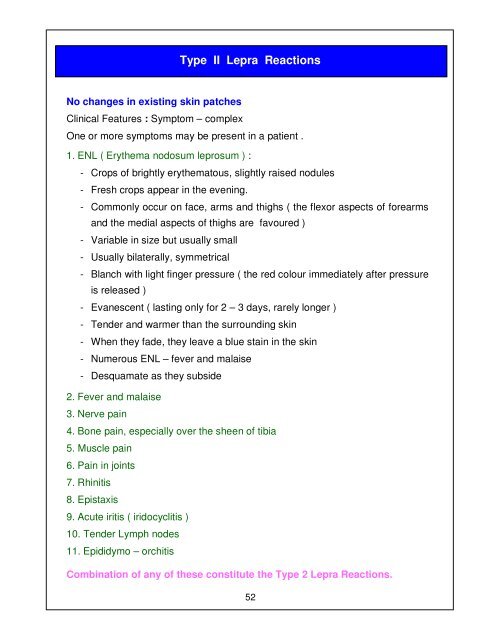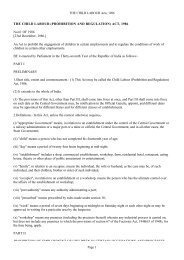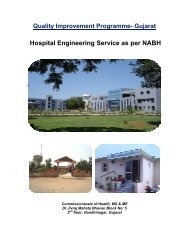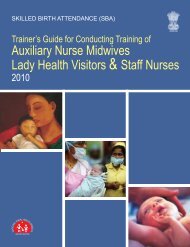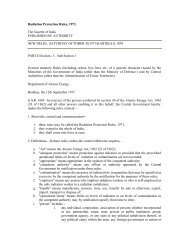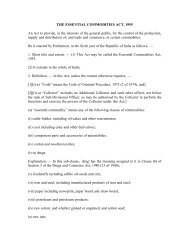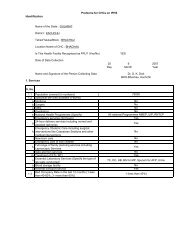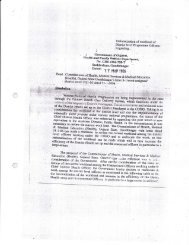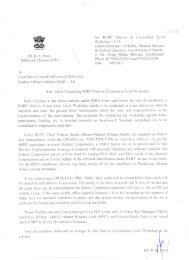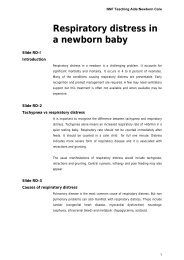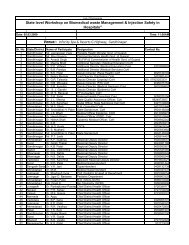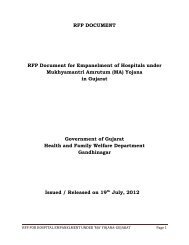Leprosy Training Module for Medical Officers
Leprosy Training Module for Medical Officers
Leprosy Training Module for Medical Officers
Create successful ePaper yourself
Turn your PDF publications into a flip-book with our unique Google optimized e-Paper software.
Type II Lepra Reactions<br />
No changes in existing skin patches<br />
Clinical Features : Symptom – complex<br />
One or more symptoms may be present in a patient .<br />
1. ENL ( Erythema nodosum leprosum ) :<br />
- Crops of brightly erythematous, slightly raised nodules<br />
- Fresh crops appear in the evening.<br />
- Commonly occur on face, arms and thighs ( the flexor aspects of <strong>for</strong>earms<br />
and the medial aspects of thighs are favoured )<br />
- Variable in size but usually small<br />
- Usually bilaterally, symmetrical<br />
- Blanch with light finger pressure ( the red colour immediately after pressure<br />
is released )<br />
- Evanescent ( lasting only <strong>for</strong> 2 – 3 days, rarely longer )<br />
- Tender and warmer than the surrounding skin<br />
- When they fade, they leave a blue stain in the skin<br />
- Numerous ENL – fever and malaise<br />
- Desquamate as they subside<br />
2. Fever and malaise<br />
3. Nerve pain<br />
4. Bone pain, especially over the sheen of tibia<br />
5. Muscle pain<br />
6. Pain in joints<br />
7. Rhinitis<br />
8. Epistaxis<br />
9. Acute iritis ( iridocyclitis )<br />
10. Tender Lymph nodes<br />
11. Epididymo – orchitis<br />
Combination of any of these constitute the Type 2 Lepra Reactions.<br />
52


